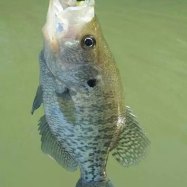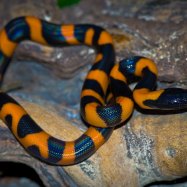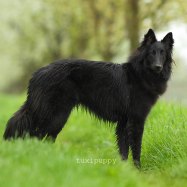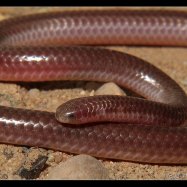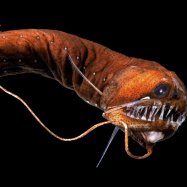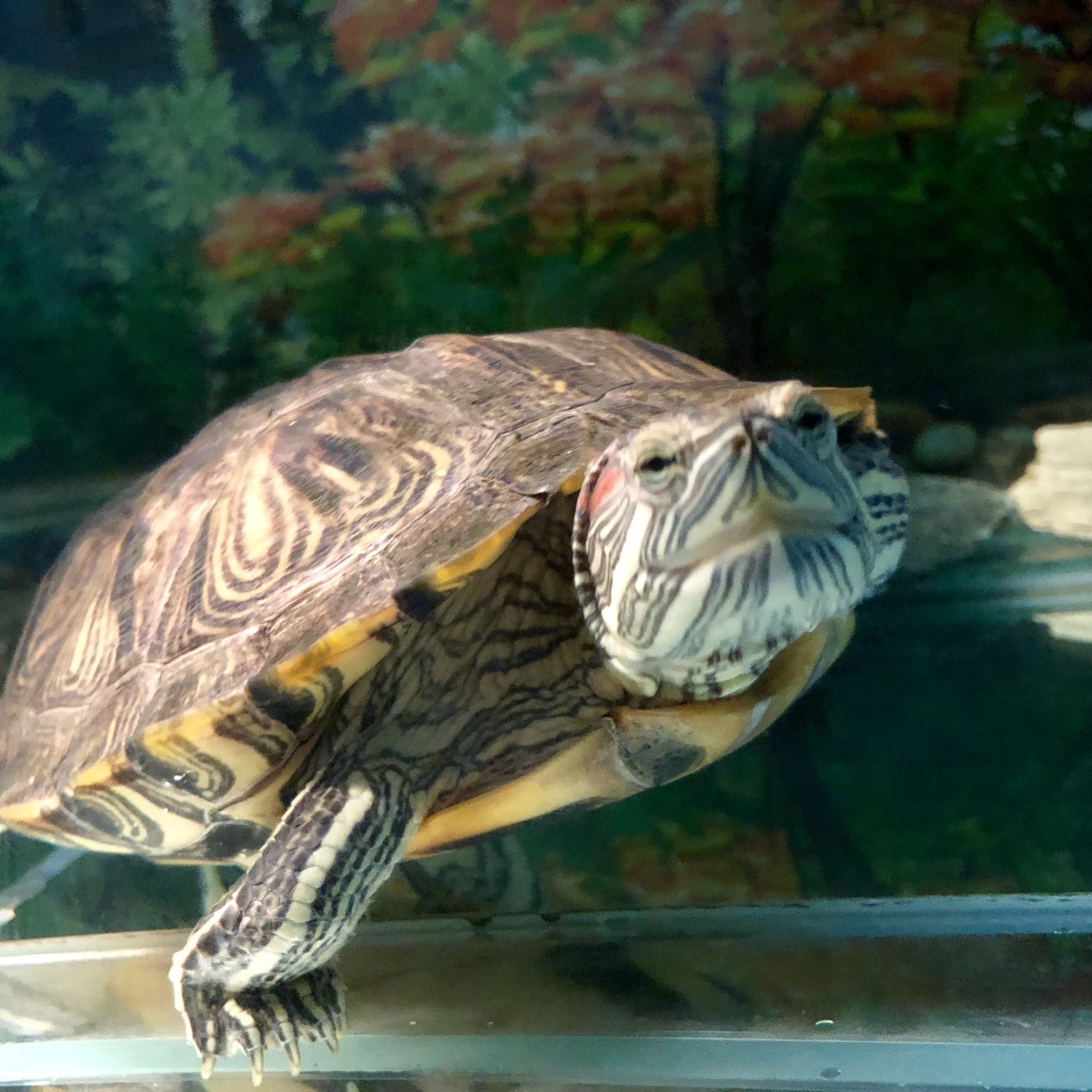
Red Eared Slider
5.9 to 11.8 inches (15 to 30 cm)
. Meet the Red Eared Slider, a popular pet turtle known for its vibrant red ears and oval-shaped shell. These aquatic creatures can grow up to 11.8 inches and are often found in ponds, lakes, and rivers. The Emydidae family members are known for their streamlined bodies, making them excellent swimmers. So, if you're a fan of turtles or looking to add a unique pet to your family, consider the Red Eared Slider - you won't be disappointed!
Animal Details Summary:
Common Name: Red Eared Slider
Kingdom: Animalia
Habitat: Freshwater
The Fascinating Red Eared Slider: A Reptile That Calls North America Home
When you think of a reptile, images of scaly creatures basking in the sun or slithering through the grass may come to mind. But there is one reptile that stands out for its vibrant colors and amusing behavior – the Red Eared Slider. Scientifically known as Trachemys scripta elegans, this water-loving creature is a popular pet and has captured the hearts of many reptile enthusiasts. Let’s dive deeper into the world of the Red Eared Slider and explore what makes it such a fascinating animal Red Eared Slider.A Colorful Splash in the Animal Kingdom
As its name suggests, the Red Eared Slider is known for the distinctive red markings on the sides of its head. These markings give the reptile its signature look and are what make it stand out in the animal kingdom. Its body is primarily a bright green, which helps it blend in with its surroundings in the wild. However, in captivity, it is not uncommon to see Red Eared Sliders in a variety of colors, such as yellow or albino.One interesting fact about their coloration is that it varies based on their environment. The temperature and amount of sunlight they receive can determine how bright their colors are. For instance, a Red Eared Slider that basks in the sun will have more vibrant colors compared to one that spends most of its time in the water.
A Reptile with a Unique Body Shape
The Red Eared Slider has an oval-shaped shell with a streamlined body, allowing it to effortlessly swim through the water. Its shell is also called a carapace and is made up of several plates that fuse together as the reptile grows Ragdoll. Unlike other turtles, the Red Eared Slider shell does not have ridges and is relatively smooth.Its shell can range from dark green to brown, with subtle patterns and markings that provide camouflage in the water. The shell also serves as protection against predators, as the Red Eared Slider can retract its head and legs inside its shell to escape danger.
An Omnivore with a Varied Diet
The Red Eared Slider is an omnivore, meaning it can eat both plants and animals. In the wild, they primarily feed on aquatic plants, insects, and small fish. In captivity, they can be fed a variety of foods, including commercial turtle pellets, fruits, and vegetables. They can also enjoy treats such as crickets, mealworms, and earthworms. It is crucial to provide a well-balanced diet for Red Eared Sliders to ensure they receive all the necessary nutrients for their health and growth.In the wild, Red Eared Sliders hunt by using their sharp claws and strong jaws to capture their prey. They are also known to use a technique called suction feeding, where they quickly suck in water along with their prey. This method is particularly useful when catching small fish or insects.
Their Habitat and Natural Range
Red Eared Sliders are native to North America and can be found in various water bodies, including ponds, lakes, and rivers. Their natural range extends from the southern United States to northern Mexico. They thrive in freshwater habitats with ample vegetation, as they require both land and water to survive.In the wild, these reptiles often bask in the sun on logs or rocks, and they can commonly be seen perched on the edge of the water. They are adaptable creatures and can also be found in urban areas, such as backyard ponds or man-made lakes.
American Origins and Growing Popularity as Pets
The Red Eared Slider is one of the most popular turtles in the world and is native to the United States. They were first introduced to the pet trade in the 1920s and have since grown in popularity thanks to their colorful appearance and relatively low maintenance.However, their increasing popularity as pets has also led to a decline in their wild populations, as many pet owners release them into the wild when they can no longer care for them. This practice is harmful to the ecosystem, as Red Eared Sliders can outcompete native species for food and nesting sites.
It is essential to only adopt Red Eared Sliders from reputable breeders or rescue organizations and never release them into the wild. Responsible pet owners must also ensure they are providing proper care for their sliders, as these reptiles can live up to 20 years in captivity.
How Red Eared Sliders Communicate
While Red Eared Sliders may not be known for being vocal creatures, they do have ways to communicate that may not be immediately noticeable. One common way they communicate is through body language. For instance, if a slider wants to show dominance, it may extend its head and puff out its throat. Alternatively, if it feels threatened, it may retract its head and legs into its shell, signaling its unease.They also use visual signals such as swimming around or basking on their logs to show contentment and relaxation. A sign of aggression could be a raised head, with its front legs held up.
Exploring with a Purpose
Red Eared Sliders have many unique characteristics, and they also play a vital role in their ecosystem. As omnivores, they help maintain a balance in their habitat by controlling the population of aquatic vegetation and small animals. Additionally, their basking behavior helps keep aquatic plants in check, preventing overgrowth.In terms of reproduction, female Red Eared Sliders can lay a large number of eggs, which helps sustain their population. While many slides do not reach maturity due to predators or human interference, their high reproductive rate can help offset these risks.
The Importance of Properly Caring for Red Eared Sliders
For those interested in adopting a Red Eared Slider as a pet, it is vital to provide proper care and a suitable habitat. These reptiles require a spacious tank with access to both land and water, adequate heating and lighting, and a varied, well-balanced diet. It is also essential to clean their habitat regularly and provide stimulating activities to keep them mentally and physically active.Additionally, it is important to research local laws and regulations regarding pet turtles, as some states have laws against keeping turtles as pets due to the risk of salmonella contamination. Always consult with a reputable veterinarian for any concerns or questions about caring for a Red Eared Slider.
In Conclusion
The Red Eared Slider is a fascinating reptile with many unique traits and behaviors. From its colorful markings to its omnivorous diet, this turtle species continues to captivate the hearts of many. While their popularity as pets has grown over the years, it is crucial to remember the significant role they play in their natural habitat and provide them with proper care and respect. By understanding and appreciating these charming creatures, we can ensure their survival for years to come.

Red Eared Slider
Animal Details Red Eared Slider - Scientific Name: Trachemys scripta elegans
- Category: Animals R
- Scientific Name: Trachemys scripta elegans
- Common Name: Red Eared Slider
- Kingdom: Animalia
- Phylum: Chordata
- Class: Reptilia
- Order: Testudines
- Family: Emydidae
- Habitat: Freshwater
- Feeding Method: Omnivorous
- Geographical Distribution: North America
- Country of Origin: United States
- Location: Ponds, lakes, and rivers
- Animal Coloration: Green with red markings on the side of the head
- Body Shape: Oval-shaped shell with a streamlined body
- Length: 5.9 to 11.8 inches (15 to 30 cm)
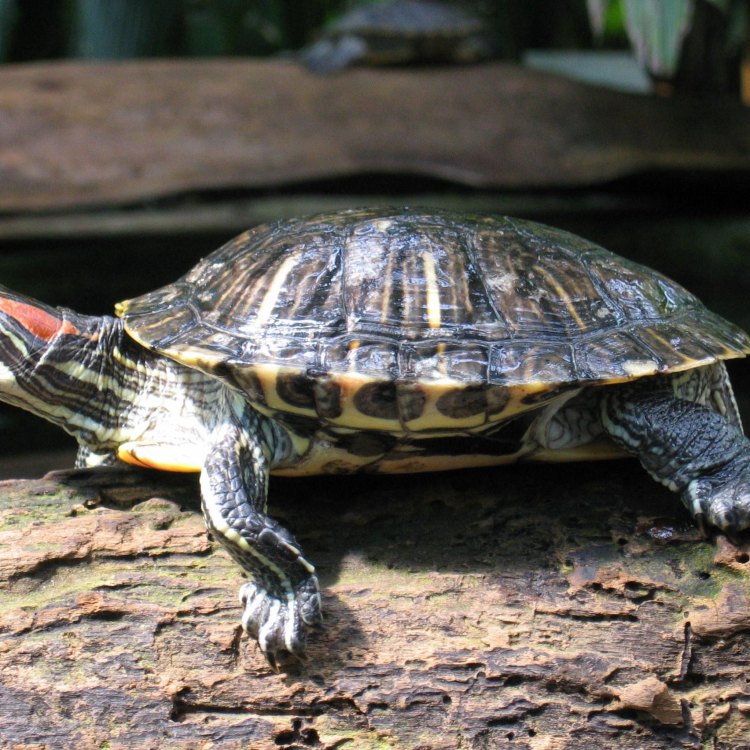
Red Eared Slider
- Adult Size: 12 to 14 inches (30 to 35 cm)
- Average Lifespan: 20 to 40 years
- Reproduction: Sexual
- Reproductive Behavior: Mating takes place in water, with the male mounting the female from behind
- Sound or Call: Males have a distinctive mating call
- Migration Pattern: Non-migratory
- Social Groups: Solitary
- Behavior: Bask in the sun and spend a significant amount of time in the water
- Threats: Habitat destruction, pollution, illegal pet trade
- Conservation Status: Least Concern
- Impact on Ecosystem: Compete for resources with native turtle species
- Human Use: Popular pet turtle species
- Distinctive Features: Red patches on the sides of the head
- Interesting Facts: Can live for decades and grow to a substantial size
- Predator: Birds of prey, larger turtles, and raccoons
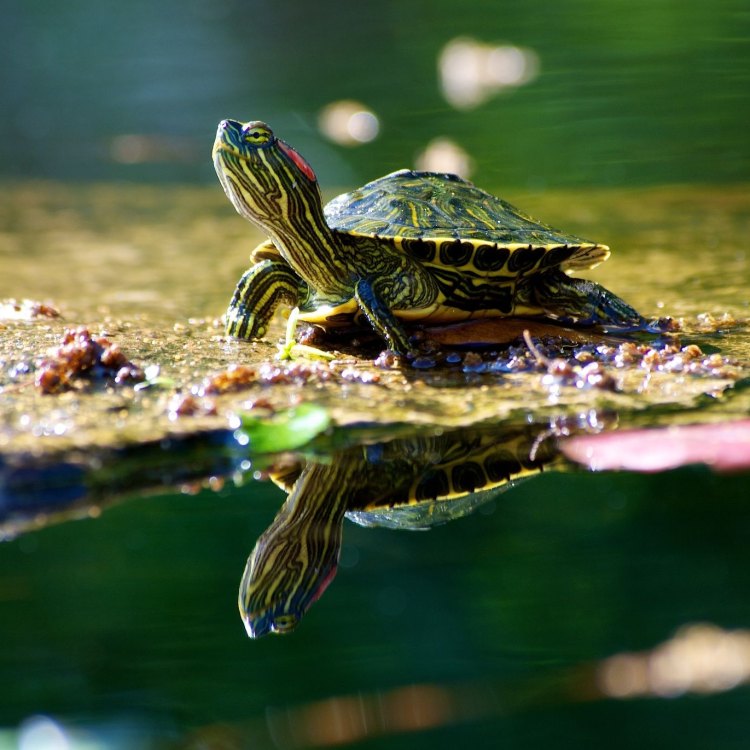
Trachemys scripta elegans
The Colorful World of the Red Eared Slider Turtle
The world is full of fascinating and unique creatures, each with their own distinctive features and personalities. Among them is a vibrant and colorful creature known as the Red Eared Slider turtle. These turtles have captured the hearts and attention of many with their striking physical appearance and interesting behaviors. Let's dive into the world of Red Eared Sliders to discover why they are such a beloved and fascinating species PeaceOfAnimals.Com.Physical Characteristics and Behavior
The Red Eared Slider, also known by its scientific name Trachemys scripta elegans, is a semi-aquatic species of turtle native to North America, specifically the southern United States and parts of Mexico. They are the most commonly kept turtle species in the world, and it's not hard to see why.An adult Red Eared Slider can grow up to 12 to 14 inches or 30 to 35 cm in length, making them a substantial size. They have distinctive red patches on the sides of their heads, giving them their name. The rest of their body is varying shades of green, yellow, and brown, adding to their colorful appearance.
Red Eared Sliders are sexual reproducers, meaning they require both a male and female for mating. Mating typically takes place in water, with the male mounting the female from behind. Their reproductive behavior also includes a unique vocalization by the males, which is a distinctive mating call. This call is used to attract females and defend their territory Red Billed Quelea Bird.
These turtles are also non-migratory, meaning they do not travel long distances like some other turtle species. They prefer to stay in their home territory, typically near a body of water. They are solitary creatures and do not form social groups. However, during the mating season, they will come together for reproductive purposes.
One of the most well-known behaviors of Red Eared Sliders is basking. These turtles love to soak up the sun and will spend large amounts of time basking on rocks, logs, or floating on the surface of the water. Basking not only helps them regulate their body temperature, but it also provides them with essential UV rays for their health.
Lifespan and Conservation
Red Eared Sliders have relatively long lifespans, with an average lifespan of 20 to 40 years. However, some have been known to live for up to 50 years in captivity. This makes them beloved pets for many, as they can provide companionship for decades.Unfortunately, these turtles face many threats in the wild that can significantly impact their lifespan. Habitat destruction, pollution, and the illegal pet trade are all significant threats to Red Eared Sliders. Human activity, such as clearing land for development and introducing non-native species, can greatly affect their natural habitat, making it difficult for these turtles to survive.
Thankfully, Red Eared Sliders are currently listed as a species of Least Concern by the International Union for Conservation of Nature (IUCN). This categorization means that while these turtles face threats, their population is not critically endangered. However, continued conservation efforts are necessary to ensure their survival in the long term.
The Impact on Ecosystems and Human Use
As with any animal, Red Eared Sliders have an impact on their ecosystem. They play an essential role in keeping the ecosystem balanced by controlling insect populations and serving as a food source for various predators.However, when introduced into new environments through the illegal pet trade, Red Eared Sliders can have a negative impact. They can outcompete native turtle species for resources, leading to a decline in their populations. In some cases, they can also spread diseases to other turtle species, further threatening their survival.
On the other hand, humans have also played a significant role in the popularity of Red Eared Sliders. These turtles are a popular pet species, and their vibrant appearance and calm nature make them an attractive option for many pet owners. However, it's essential to remember that owning a Red Eared Slider comes with a great responsibility. They require specialized care and a good understanding of their needs to thrive as pets.
Distinctive Features and Interesting Facts
Aside from their colorful appearance and unique behaviors, there are some other distinct features and interesting facts about Red Eared Sliders that make them stand out. One of the lesser-known facts is that they can quickly become aggressive towards other turtles if kept in an enclosed space. This behavior is known as "clawing" and is a way for turtles to establish dominance and defend their territory.Another interesting fact about Red Eared Sliders is their ability to hibernate. In colder climates, these turtles will bury themselves in mud or debris at the bottom of water bodies to survive the winter. They can slow down their metabolism and use stored energy reserves to survive until spring, making them resilient creatures.
Red Eared Sliders also have a few natural predators, including birds of prey, larger turtles, and raccoons. These predators target young turtles or smaller adults, making it crucial for Red Eared Sliders to reach a substantial size to increase their chances of survival.
In Conclusion
Red Eared Sliders are fascinating and colorful creatures that have captured the hearts of many around the world. Their physical appearance, interesting behaviors, and long lifespans make them a highly sought-after pet species. However, as with any animal, their care and conservation should be the top priority to ensure their survival in the wild.Through understanding and educating ourselves about Red Eared Sliders, we can appreciate their unique features and take steps to protect them and their natural habitat. Let's strive to coexist with these beautiful creatures and continue to learn and appreciate the diverse and colorful world of the Red Eared Slider turtle.
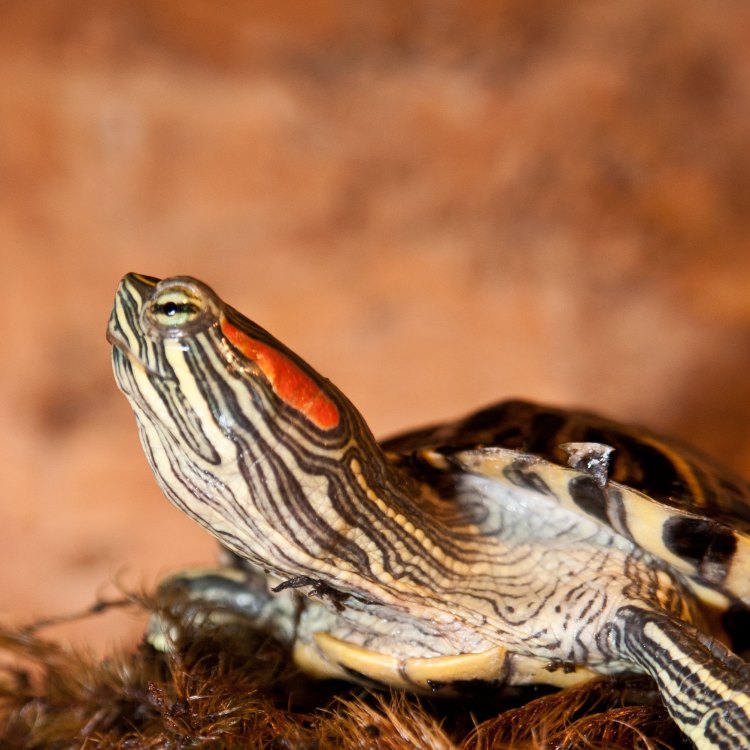
The Fascinating Red Eared Slider: A Reptile That Calls North America Home
Disclaimer: The content provided is for informational purposes only. We cannot guarantee the accuracy of the information on this page 100%. All information provided here may change without prior notice.


